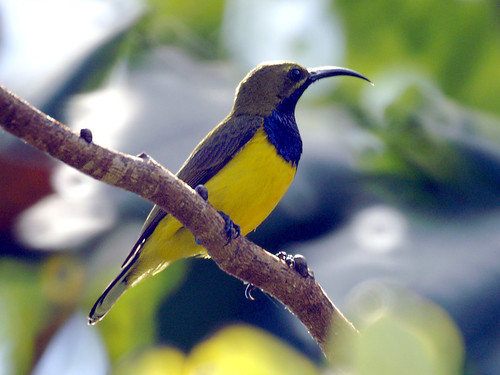The Vibrant Nectarinia Jugularis: A Jewel Of The Philippine Islands
Share
The Nectarinia jugularis, commonly known as the Philippine sunbird, is a captivating bird species belonging to the family Nectariniidae. This small, colorful bird is a true gem of the Central Philippine Islands, showcasing a remarkable blend of beauty and ecological significance. In this article, we will explore the taxonomy, physical characteristics, habitat, diet, behavior, reproduction, and conservation status of this enchanting species.

Taxonomy
The Philippine sunbird is classified under the order Passeriformes and the suborder Oscines. Its family name is Nectariniidae, which includes various species known for their nectar-feeding habits. The species name, Nectarinia jugularis, was first described by Carl Linnaeus in 1766, originally as Certhia jugularis. The subspecies jugularis is prevalent across the Central Philippine Islands, ranging from southern Luzon to Mindoro, Mindanao, and Basilan.
Physical Characteristics
Nectarinia jugularis is a small bird, typically measuring around 10 to 12 cm in length. Males are particularly striking, displaying iridescent plumage that varies from olive green to bright yellow, with a distinctive metallic blue throat. Females, while less colorful, exhibit a more subdued palette of browns and yellows, which aids in camouflage during nesting.

Habitat
This species thrives in a variety of habitats, including tropical forests, gardens, and agricultural areas. The Philippine sunbird prefers areas with abundant flowering plants, as these provide essential nectar sources. Its range extends across the Central Philippine Islands, where it can be found in both lowland and montane forests, showcasing its adaptability to different environments.

Diet
The diet of Nectarinia jugularis primarily consists of nectar from various flowering plants, making it an important pollinator in its ecosystem. In addition to nectar, these birds also consume insects and spiders, particularly during the breeding season when protein is crucial for raising their young. Their long, slender bills are perfectly adapted for extracting nectar from tubular flowers.

Behavior
Philippine sunbirds are known for their agile flight and energetic behavior. They are often seen flitting from flower to flower, using their specialized tongues to extract nectar. These birds are also territorial, with males engaging in displays to attract females and defend their feeding areas. Their melodious songs and calls add to the vibrant atmosphere of their habitats.

Reproduction
Breeding typically occurs during the wet season, when food resources are abundant. Nectarinia jugularis builds cup-shaped nests using plant fibers, spider silk, and other materials, often suspended from branches. The female lays two to three eggs, which she incubates for about two weeks. After hatching, both parents participate in feeding the chicks, providing them with a diet rich in nectar and insects.
Conservation Status
Currently, the Philippine sunbird is not considered endangered, but habitat loss due to deforestation and urbanization poses a threat to its populations. Conservation efforts aimed at preserving natural habitats and promoting sustainable land use practices are essential for ensuring the survival of this beautiful species.
Observing Nectarinia jugularis
For birdwatchers eager to observe the Philippine sunbird, the best locations include tropical gardens, nature reserves, and forested areas across the Central Philippine Islands. Early mornings are ideal for spotting these birds as they are most active during this time. Patience and a keen eye will reward observers with the chance to witness the dazzling display of colors and behaviors of this remarkable species.
The Nectarinia jugularis stands as a testament to the rich biodiversity of the Philippine Islands. Its role as a pollinator and its vibrant presence in the ecosystem highlight the importance of conserving its natural habitats. As we appreciate the beauty of this sunbird, let us also commit to protecting the environments that sustain it, ensuring that future generations can enjoy the sight of this avian jewel.